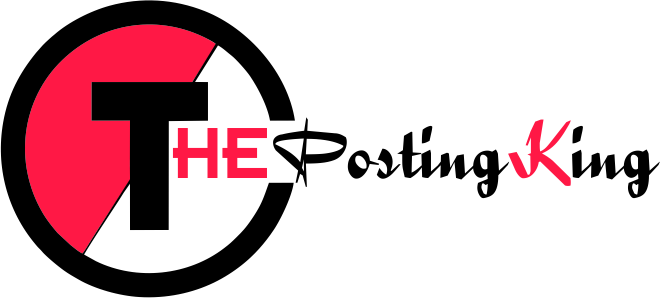A sudden drop in search rankings can feel like a mystery, but it’s usually a clear sign that Google has flagged the site for violating its guidelines. Recovering from a penalty isn’t just about making quick fixes—it requires a strategic approach to rebuild trust with search engines. A skilled SEO marketing agency knows how to diagnose the issue, fix the damage, and restore a website’s authority.
Conducting a Full Penalty Diagnosis to Identify the Exact Cause of Ranking Drops
Before making any changes, an SEO agency in Huntsville, AL must first determine what triggered the penalty. Google penalties come in two forms—manual actions and algorithmic penalties. Manual penalties occur when Google reviewers flag a site for breaking its rules, while algorithmic penalties result from updates that devalue certain SEO practices. Identifying the root cause is the first step toward recovery.
A deep dive into search analytics, Google Search Console notifications, and backlink profiles can reveal what’s hurting rankings. If there’s a manual penalty, the reason will be listed in Google Search Console, giving clear guidance on what needs to be fixed. Algorithmic penalties, however, require more analysis—comparing traffic drops with Google’s algorithm updates can uncover whether thin content, spammy backlinks, or poor user experience caused the decline. Once the issue is identified, a clear recovery plan can be implemented to restore the site’s search visibility.
Removing or Disavowing Toxic Backlinks That Trigger Algorithmic Penalties
Not all backlinks help a website’s rankings. Google penalizes sites with unnatural, low-quality, or spammy links, which can trigger ranking drops. A Huntsville SEO expert will audit a site’s backlink profile to find harmful links that could be causing issues. These toxic backlinks often come from link farms, irrelevant directories, or websites with poor reputations.
Once the bad links are identified, an SEO agency will attempt to remove them by reaching out to site owners and requesting removal. If that’s not possible, Google’s Disavow Tool can be used to tell search engines to ignore those links. Cleaning up a site’s backlink profile is essential for regaining rankings and preventing future penalties. After disavowing or removing bad links, it’s time to rebuild with high-quality backlinks from trusted sources.
Updating Thin or Duplicate Content to Meet Google’s Quality Standards
Content that lacks depth, provides little value, or is copied from other sources can lead to penalties. Google prioritizes high-quality, original content, and pages with thin or duplicate material often get pushed down in rankings. A strong content strategy is key to recovery.
An SEO company will analyze the site’s existing content, identifying pages that need improvement. Thin content can be expanded with detailed information, examples, and engaging visuals to provide real value to users. Duplicate content issues are resolved by rewriting sections, using canonical tags, or removing unnecessary copies. By aligning content with Google’s quality standards, a site can regain lost rankings and build a stronger presence in search results.
Rebuilding Domain Authority with High-quality, Relevant Backlinks
After removing harmful links, the next step is rebuilding authority with strong backlinks. Google rewards sites that earn links from credible, industry-relevant sources. A well-planned link-building strategy helps establish trust and boosts rankings.
An experienced SEO agency in Huntsville, AL will focus on securing high-quality backlinks through guest posting, digital PR, and industry collaborations. Content marketing plays a huge role in this—publishing valuable, informative content encourages other sites to link naturally. The key is quality over quantity; a handful of relevant, authoritative links can do more for rankings than hundreds of low-quality ones. As new, trusted backlinks accumulate, Google starts to recognize the site as a reliable source, helping rankings climb back up.
Improving User Experience Metrics like Bounce Rate and Dwell Time
Google’s algorithm doesn’t just evaluate backlinks and content—it also looks at how users interact with a website. High bounce rates and low dwell time can signal poor user experience, which can contribute to ranking penalties. Addressing these issues can help recover lost positions in search results.
A skilled SEO marketing agency will optimize site speed, improve navigation, and ensure content is engaging. Slow-loading pages frustrate users, causing them to leave quickly, which can negatively impact rankings. Mobile-friendliness is another major factor—Google prioritizes sites that perform well on all devices. By enhancing user experience, visitors stay on the site longer, reducing bounce rates and sending positive signals to search engines.
Monitoring Algorithm Updates to Prevent Future Penalty Risks
Google frequently updates its algorithm, and staying ahead of these changes is essential for long-term SEO success. What works today may not be effective tomorrow, making continuous monitoring crucial for avoiding future penalties.
An SEO company keeps track of search engine updates and adjusts strategies accordingly. By analyzing ranking fluctuations and industry trends, businesses can adapt before penalties happen. Regular site audits, backlink monitoring, and content evaluations ensure compliance with the latest search guidelines. With a proactive approach, a website can maintain strong rankings without the risk of sudden penalties.



